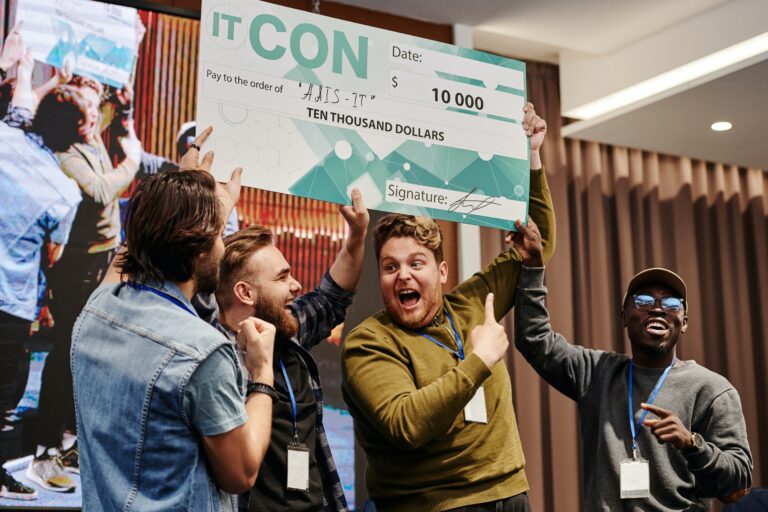10 Employee Retention Strategies
The epidemic was a true stress test. It was possibly the worst HR disaster in history. We all took unanticipated detours. Businesses made investments to ensure the success of remote work, and teams discovered ways to collaborate regardless of the circumstances. These are the foundations of good company culture, the kind that can turbo future growth, but there is one catch: employees must stay.
Regardless of the circumstances, HR teams and department managers should always do everything in their power to manage employees in a way that allows them to keep their best employees. Employees that have been with your firm for a long time understand what makes it work, how to get things done, and, most importantly, they know each other.
The flip side of the coin is that the expense of acquiring new personnel might be exorbitant. Indeed, according to The Society for Human Resource Management (SHRM), a company will spend 6 to 9 months of an employee’s compensation on finding, hiring, and training a new team member. Employee retention rates vary by industry, but every company wants (or should want) to maintain its rock stars. If your organization is having difficulty retaining staff, here are some suggestions for how to keep the ones you have:
Enhance Your Advantages
When it comes to courting recruits these days, incentives are the frosting on the cake. When it comes to employee happiness, a competitive benefits package is usually second only to a competitive wage. However, with five generations represented in the workplace, a one-size-fits-all benefits scheme is likely to backfire. A tailored benefits package is the way to go. It has been demonstrated time and again that having the correct benefits programs in place improves engagement.
Recognize your employees’ efforts
Everyone enjoys being recognized and praised for their efforts. Recognizing your staff for a job well done is a vital step in ensuring long-term employee engagement. Your top talent is no exception. According to a March 2022 survey, 46% of employees left a job because they didn’t feel appreciated. Furthermore, 65% claimed they would work harder if they thought their efforts would be recognized by their bosses. (Bonus) According to Gallup’s annual survey of the American workforce, only one in every three U.S. employees strongly feels that they received acknowledgment or praise for doing a good job in the previous seven days. People who regularly feel that their finest work is overlooked are twice as likely to say they would quit in the next year, so it’s clear to see why providing incentives for employees to continue with you is so vital.
Prioritize professional development
Your best employees are already excellent at what they do, but they want to keep improving to become even better. Making professional development and progress a major priority at your organization can encourage them to stay. You can also create a mentorship program that pairs senior executives with your top performers.
When you grow employees using a learning management system, you will simultaneously generate a pool of prospective new leaders within the firm who are statistically more likely to succeed than leaders brought in from outside the business. Employee engagement and retention can be improved by planning, administering, and providing individualized training to employees in a planned and cost-effective manner.
Allow your employees scheduling flexibility
Is it truly necessary for your staff to work from 9 a.m. to 5 p.m. five days a week? By implementing flexible work hours and telecommuting, you may discover that your employees are more productive and satisfied, with less tension between work and personal duties. Remember that it is critical to set out the policy and get it correct so that there is no ambiguity.
Make Day 90 as significant as Day One (Onboarding)
The employee onboarding process does not end just because they have completed all of the appropriate papers. It is just as vital to ensure that your workers have a great, engaging onboarding experience as it is to ensure that your recruiting and application processes run smoothly. Onboarding is your first interaction with a new employee. You want to put your best foot forward to assist them in becoming totally productive as soon as possible. Utilize our comprehensive 90-day onboarding checklist to refine your program and provide new workers with the best “your company name” experience possible.
Improve Your Equipment
Examine your computer. Is it heavier than a bowling ball? Many businesses worry about obsolete gear and software. Not only does old equipment make your employees inefficient, but it also communicates the idea that your organization is uninterested in keeping up with the latest tools and technologies.
Show them how much money they make
A total pay statement outlines an employee’s whole remuneration package, which includes all cash income as well as the worth of benefits. Because most employees focus primarily on their net pay and forget or underestimate the value of their benefits package, the total compensation statement is often referred to as a hidden paycheck. An integrated HCM solution can aid in the generation of this data.
Encourage Cooperation
Nobody enjoys working in a vacuum. Harvard Business Review discovered that teams perform well when CEOs invest in social ties, model collaborative behavior, and foster what they describe as a “gift culture”—one in which employees believe that contacts with leaders and colleagues are worthwhile and generously supplied.
Internal Promotion
If you are constantly recruiting new management from outside the organization, it might be discouraging to your best staff. Your top achievers want to know that they can advance in their careers. Make it easy for them by establishing a robust internal progression program with succession planning.
Communicate
Many employee annoyances stem from a lack of communication. Make sure your company has outlets for honest, precise feedback from and to its employees, as well as means to express praise and constructive criticism in real-time. Top-down communication can easily become muddled and perplexing. Instead, wherever possible, focus on direct, one-on-one talks. And provide digital areas, such as employee communities, for employees to get together and solve problems without management standing in the way. Don’t leave managers to figure out suitable coaching and communication tactics; instead, train them. Check out our Leader’s Guide to Employee Feedback to help you and your team have more meaningful interactions.
One of the most important aspects of developing an effective people management plan is retention. Visit icehrm for more HR tips.








